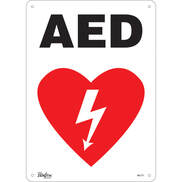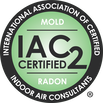Mike's Home Inspector BlogMichael Burfitt |
 As a home inspector, I am continuously refining my skills to notice things that the average person may not. Part of my abilities come from my experience as an Advanced Medical First Responder: I used to volunteer with St. John Ambulance at major public events and part of my role was usually to locate and take possession of the AED as I was both extensively trained and experienced in using it. What exactly is an AED? It stands for Automated External Defibrillator and is used to reset a heart that is in a shockable rhythm. They are found in more and more buildings and (hopefully sooner rather than later) will eventually be found in most condominium and apartment complexes and even some homes as the price continues to drop on basic models. Much like home inspections, there are a lot of myths and misconceptions I hear about these units. AEDs Are Only for Trained Personnel (or Doctors) This may have been true in the past but is absolutely, positively FALSE. While I would highly recommend everyone to take a first aid course, these units can be used by anyone (yes, even children), and they will clearly spell out in easy to understand voice prompts how to properly use them for anyone not trained. AEDs Can Cause Unnecessary Pain and Suffering An AED works by analyzing a heart rhythm and if it detects a shockable rhythm (ventricular fibrillation or pulseless ventricular tachycardia) only then will it allow the user to deliver a shock. While I obviously don’t recommend doing so, hooking an AED up to a conscious person or anyone who is not in cardiac arrest will mean you cannot deliver a shock, accidently or otherwise. This myth can be expanded further to include a fear of accidently breaking ribs or causing serious damage to a casualty. To put it bluntly, anyone in cardiac arrest is in immediate life-threatening danger and you only have minutes before irreversible damage is done to the brain so do not be afraid of cutting expensive clothing or potentially breaking bones. There is almost zero potential for legal liability for doing anything in good faith to attempt lifesaving procedures as a bystander, trained or not. An AED will Start a Stopped Heart (or is a Magic Pill) Building on the previous myths, an AED will NOT restart an asystole (AKA flatline) rhythm. Nor will it magically restore someone to life like in a video game. An AED, combined with CPR and calling 911 are only tools that can be used to keep someone alive long enough to get to a hospital. The sad reality is while an AED is a lifesaving piece of equipment, the odds are against anyone in cardiac arrest where seconds count. AEDs are Only for People Having a Heart Attack While a heart attack can lead to cardiac arrest, they are two separate issues (think of it as a plumbing problem vs an electrical problem). One of the reasons we always carried an AED when doing public events was knowing that cardiac arrests happen suddenly and without warning. Whenever I go out and about, I tend to automatically note where the nearest AED, first aid station and fire extinguisher is located. AEDs will eventually be seen nearly everywhere, and it is important to know how to locate one in an emergency. While a cardiac arrest is undoubtedly a scary situation, an AED is straightforward and easy to use without fear by anyone. |
Archives
July 2024
Categories
All
|
|
Inside Edge Home Inspections Ltd.
Halifax, NS 902-209-9921 [email protected] Proudly Serving the HRM & Central Nova Scotia |

 RSS Feed
RSS Feed

